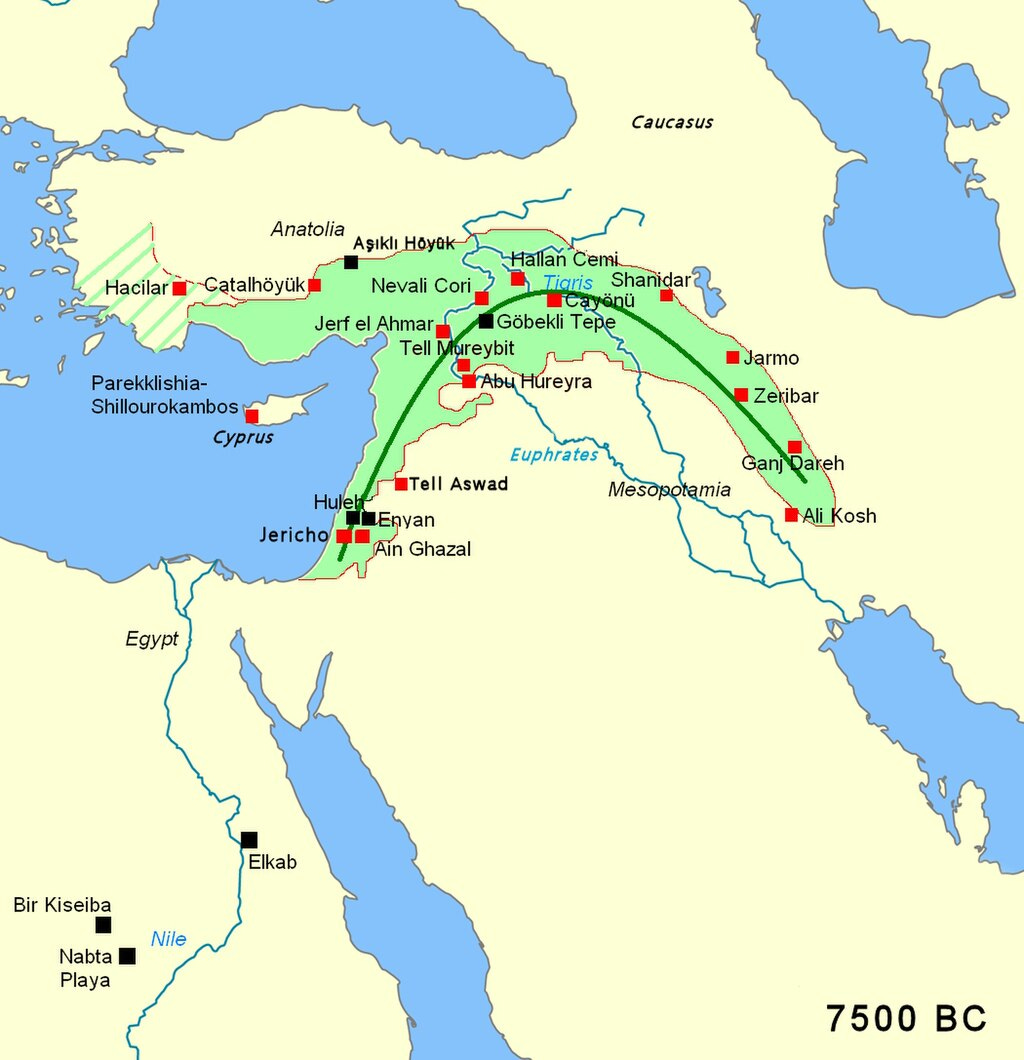I need help to come up with a new name for the Prepottery Neolithic on my charts. Longtime readers will know that I have concluded that the culture that archaeologists refer to as the “Prepottery Neolithic” was the culture of the Tower of Babel and may have lasted about a century after the Dispersion.
One of my readers, named Dan Janzen, has stridently objected that the name “Prepottery Neolithic” is misleading because it assumes that people gradually learned how to make pottery rather than recognizing that some cultures used perishable containers such as leather wineskins, while others used pottery.
Genesis 10 and 11 clearly show that the generations immediately after the Flood had advanced knowledge of ceramics and architecture. “Let us make bricks and back them thoroughly.” So the idea of a gradual evolution from hunter-gatherers to sedentary farmers over tens of thousands of years is obviously false.
I agree with Dan that “Prepottery Neolithic” is a misleading name for two reasons. First, the name “Neolithic” means “new stone” and refers to the Darwinist assumption that the Paleolithic and Mesolithic stone ages preceded the Neolithic stone age, when people suddenly learned how to farm. It is my belief that the so-called Paleolithic and Mesolithic sites and artefacts were merely the disposable tools made and used by hunters during the first seven centuries after the Flood.
The so-called “Neolithic” tools were the stone tools used by sedentary farmers and village builders during the exact same time period. Scripture informs us that after the Flood, “Noah began to be a farmer.” Therefore, we can date the “Neolithic” as beginning within a decade after the Flood itself in 2348 BC. So there was nothing “new” about the “Neolithic” because it was contemporaneous with the Paleolithic. The two types of tools were used for different modes of life, hunting versus farming.
It may be that during those seven centuries after the Flood, in some locations, a village was later built on a Paleolithic campsite. This could give the appearance that the Neolithic followed the Paleolithic.
Second, the word “Prepottery” grossly oversimplifies the reality with a false assumption. There are several reasons why the earliest culture after the Flood did not make ceramic pottery. Noah’s Ark must have had many containers to store water, food, wine, oil, and other precious substances. (I have argued elsewhere that the amazing predynastic stone jars are pre-Flood artefacts that were part of the Ark’s cargo.) Given they had a new world to explore and learn how to live in, it stands to reason that the patriarchs would have recycled the containers from the Ark until they were all gone.
Additionally, the choice of whether to use a leather waterskin or a ceramic amphora would largely depend on whether you had to transport it. Leather water skins are highly portable, though they have a lower volume. But skins are so perishable that they leave almost no trace in the archaeological record. Later cultures developed the capacity to transport large amphorae full of wine and oil in ships and with carts. But they required special precautions to keep them from breaking during transport. Ceramic shards are nearly indestructible and therefore leave a permanent archaeological record.
I must conclude that the terms “prepottery” versus “pottery” and “lithic” versus “bronze” ages are both false dilemmas. They were lifestyle technologies practiced by different cultures at roughly the same time in history.
My dilemma as a historian and author is that the Prepottery Neolithic is central to my arguments about the early history of mankind after the Flood. This culture is the strongest evidence that civilization began after the Flood in the mountains of Urartu, just as the Bible says it did.
I do need to put this on my charts in a way that people can look it up to see what I’m talking about. However, I don’t want to mislead my audience by reinforcing false evolutionary assumptions either. I need a new name for the Prepottery Neolithic. I would appreciate feedback and suggestions from my readers on this.





In keeping with the etymology of Neolithic, if the distinction is between hunter/gatherer and farmer communities, I propose something like:
- Kynigolithic (hunter-stone) for Paleolithic
- Agricolithic (farmer-stone) for Neolithic
A culture is characterized from its surviving tools and so these are not temporal markers but cultural ones.